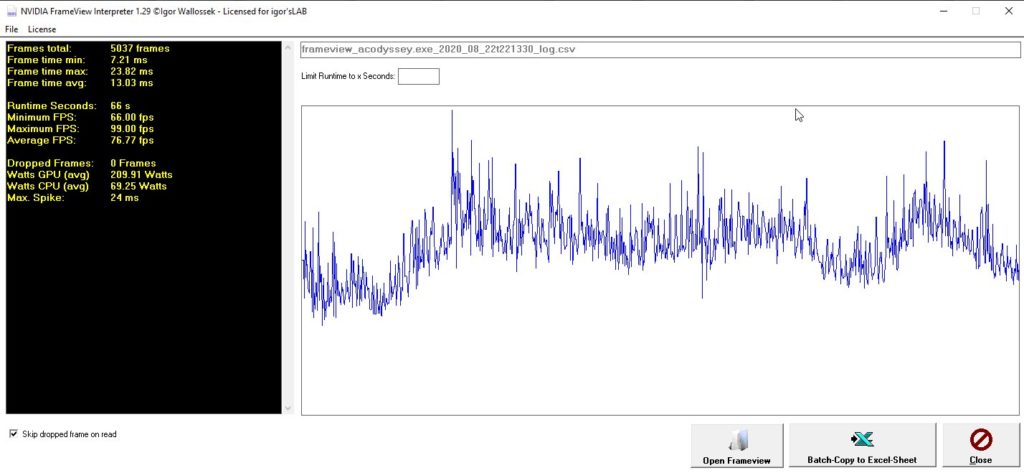First I run the benchmark run and log frame time, PCAT data and system data like CPU clock, load and package power with NVIDIA FrameView, so I let the full log file be written. Of course, I don’t have any graphics with a detailed evaluation yet, this is done in larger Excel shots with tons of macros. But since Excel including VBA is not worthwhile for extensive calculations, I let my interpreter run all log files first, which generates the data sets for Excel and at the same time takes care of all complex calculations up to extra- and interpolation of the graphic data (common timeline of all maps, no matter how many frames were rendered). Of course, all raw data in full resolution are also used to determine the further results and evaluations.
The FPS progressions are clear, I’ll spare the bars at this point, I’ve already explained the story with the percentiles several times.
More interesting are the frame time histories. Cleanly interpolated, these data also lie neatly on a common time axis.
![]() The power consumption values are also scaled accordingly in the common time axis. In this case we see the values for the respective graphics card on all rails. You don’t have to speculate with unclear variables like ASIC, that is the total power consumption, i.e. the board power.
The power consumption values are also scaled accordingly in the common time axis. In this case we see the values for the respective graphics card on all rails. You don’t have to speculate with unclear variables like ASIC, that is the total power consumption, i.e. the board power.
If you want it even more precise, you can even map the frame time for each individual card together with the respective power consumption on a common time axis. This is already pure measuring luxury. NVIDIA solves this in a more granular way than my measurement setup with the MCU-controlled modules, but saves the much more complex merging of huge data sets via the Ethernet timestamp. This is quite sufficient for visual representation and a fairly accurate average value:
This is exactly the summary I get from the non-interpolated raw data and can even display and compare the power consumption of the GPU with and without CPU.
And for those readers who are very much in love with details, there is now the big question of the day: how efficient is a card actually? For exactly this special game, there is a calculation of the power consumption in watts averaged over the runtime, which you have to spend on average for a rendered frame. It doesn’t get any more beautiful than that, does it?
































Kommentieren